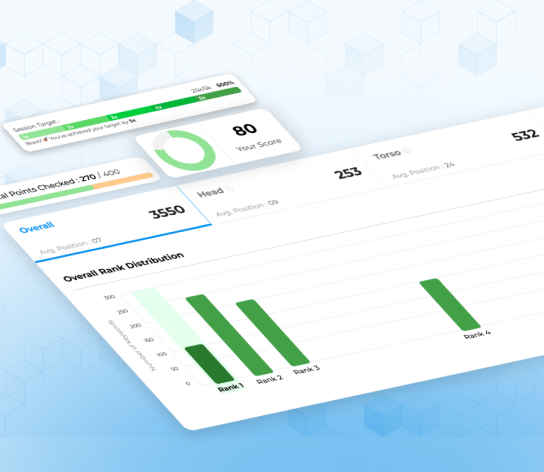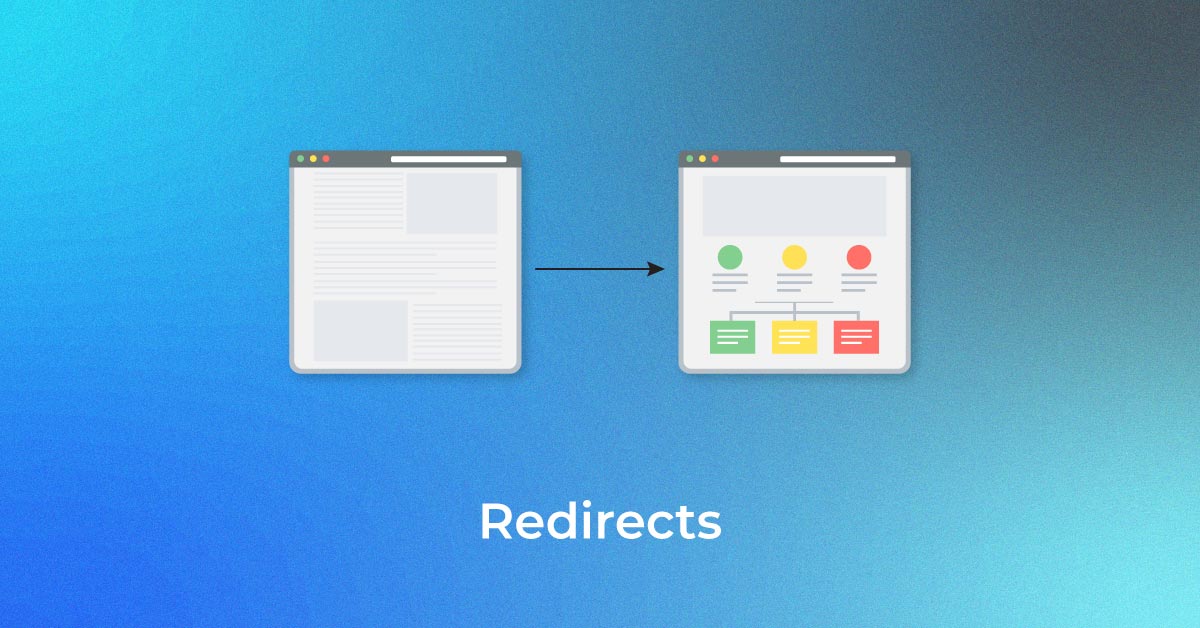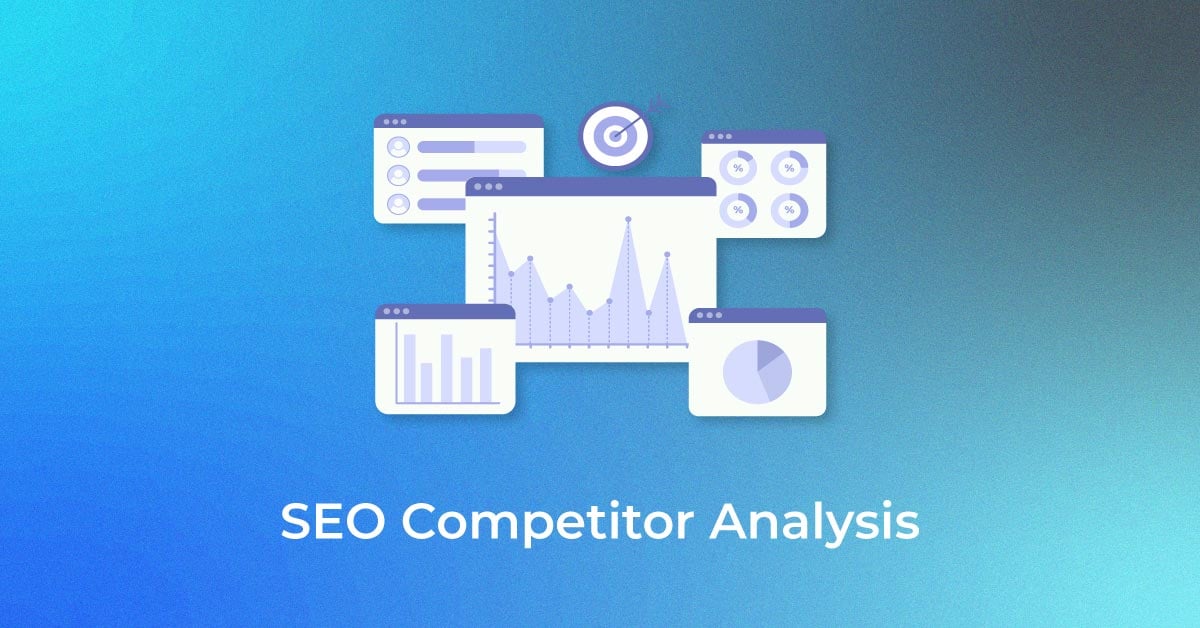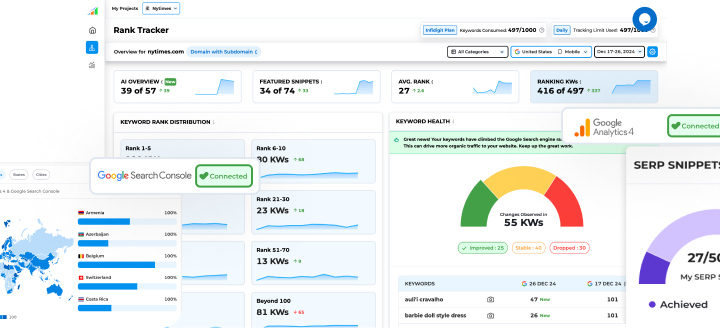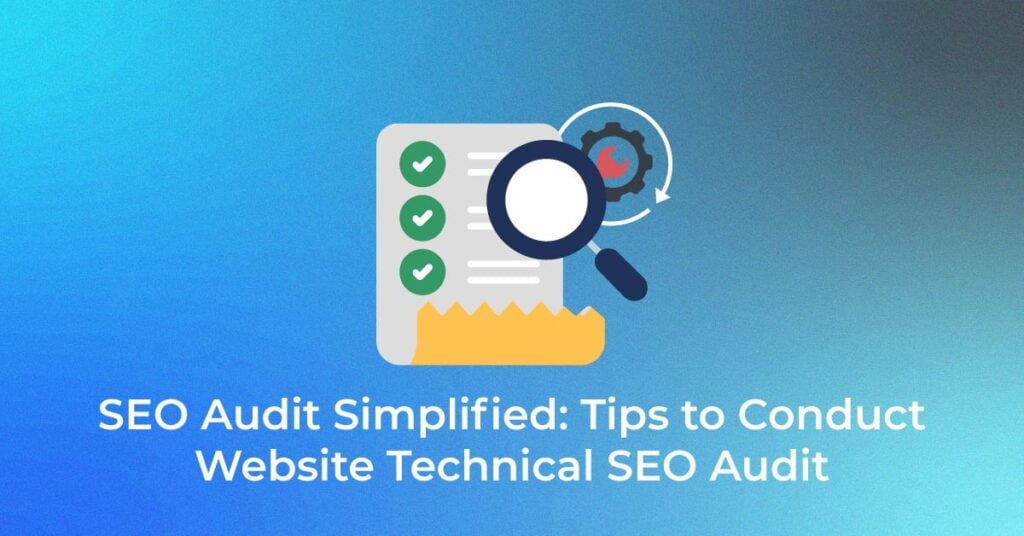Introduction to SEO Audits
What is a Technical SEO Site Audit?
A Technical SEO Site Audit is your roadmap to website optimization. It’s an exclusive deep dive into your website’s technical framework, aimed at ensuring all the gears and sprockets of your digital presence are aligned for peak search engine performance. The audit covers everything from how search engines crawl your pages to how users navigate through your site. It zeroes in on the underlying technicality that might unfurl into issues, effectively holding back your website from its full SEO potential.
Simplifying the Complexities of SEO Audits
Embarking on an SEO audit can feel like untangling a complex knot, where each twist and turn leads to more confusion. Yet, these efforts are pivotal, steering your website clear of hidden pitfalls that dampen search visibility. To simplify the process, break down the audit into manageable elements like site structure, content, and user experience. By using a combination of SEO tools and checklists, you can dissect and address these components methodically. Remember, the power lies in the details, so guard against feeling overwhelmed. Think of it as piecing together a jigsaw puzzle — each bit of data is a clue to achieving a complete picture of your website’s SEO health.
Pre-Audit Essentials
Defining Audit Goals and Scope
Before deep-diving into a technical SEO audit, it’s vital to crystalize what you’re aiming to achieve. Start by defining the audit’s ultimate purpose, whether it’s to ascend in search rankings, increase organic traffic, or mend specific technical woes. Your goals should be SMART: Specific, Measurable, Achievable, Relevant, and Time-bound, ensuring you can monitor milestones and measure outcomes effectively. Tailoring the scope of your audit to align with your broader business goals, such as boosting e-commerce conversions or amplifying content visibility, sets a clear path for your SEO strategy. By etching out a well-defined scope, you ensure that resources are geared towards high-impact areas, optimizing your efforts to deliver tangible results.
Assembling Your SEO Audit Toolkit
To navigate the intricacies of an SEO audit, you’ll need a robust set of tools, much like an artisan’s toolkit. Start with Google Search Console, the foundational tool providing essential audit data and ranking insights. It’s crucial, however, to augment this with additional software to paint a full technical panorama of your site. Incorporate tools such as SEO PowerSuite’s WebSite Auditor for an in-depth technical analysis, and complement with specialized utilities like Screaming Frog for crawl insights or PageSpeed Tool for loading times. The selection of tools ought to reflect the breadth and depth of your audit goals—choosing wisely will make the task at hand not only more manageable but also more precise. Compare solutions and cherry-pick each tool to fit your checklist ensuring that all SEO facets—are thoroughly scrutinized.
The Core Components of an SEO Audit
Evaluating Site Crawlability and Indexation
Evaluating site crawlability and indexation stands at the heart of SEO audits, as they determine how search engines understand and store information from your website. Check your robots.txt to ensure search bots are welcomed aptly and are not blocked from crucial content. Use tools like Google’s Search Console to identify crawl errors and monitor how your site is being indexed through crawling. Additionally, conducting a crawl with utilities like Screaming Frog reflects which pages are indexable and flags potential issues in status tags, pinpointing why certain pages remain non-indexable. Balance crawlability with crawl budget optimization, guaranteeing search engines are spending their resources on your most important content.
Drilling Down on Site Architecture and User Experience
For a website to flourish in SEO, its architecture must be constructed with both logic and simplicity. This means crafting a streamlined hierarchy where users can glide from page to page intuitively, usually within three clicks. Inspect your website’s taxonomy, silo structures, and XML sitemap for clarity and ensure the user journey is as direct as possible. Ensure that navigation—including menu items, footer links, and breadcrumbs—mirrors this simplicity, steering clear of convoluted pathways that could thwart users and search engines alike. During the audit, screen for URL structures that foster a seamless experience, trimming any superfluous parameters or inconsistent naming conventions. Enhancing the architecture enhances not just user experience but also search engine comprehension, which in turn can bolster your rankings.
On-Page Optimization Analysis
Pinpointing Content Quality and Relevance
The essence of content quality lies in its ability to engage, inform, and provide value to your audience. Audit your website’s content with a critical eye, ensuring it’s not only well-written and free of errors but that it also resonates with the interests and queries of your target demographic. Gauge relevance by cross-referencing your topics with trending keywords and user search intentions. Content length should be scrutinized as well; while in-depth posts can assert authority, brevity may be favored in certain contexts. Remember, originality is paramount—a unique voice and perspective can elevate content from good to remarkable. To maintain your competitive edge, routinely refresh outdated material and enrich articles with multimedia, fostering a dynamic and comprehensive user experience.
Optimizing Meta Tags and Structured Data
Meta tags are the silent narrators of your website’s story to search engines. They include elements like title tags and meta descriptions that, while not visible on the page, play a pivotal role in SEO. To optimize, ensure your title tags are succinct, keyword-rich, and distinct across pages, while meta descriptions should entice clicks with a clear value proposition.
Additionally, structured data, or schema markup, underpins your content’s context for search engines, weaving rich details into search results and possibly boosting click-through rates. Harness tools like Google’s Structured Data Testing Tool to verify your schema’s effectiveness and confirm that search engines can parse the information accurately. Strengthening these behind-the-scenes elements, including maintaining an XML sitemap, sharpens your website’s appeal not only to algorithms but to prospective visitors browsing through search results.
Site Performance Matters
Scoring Page Speed and Core Web Vitals
In SEO, page speed is more than a vanity metric—it’s a vital first impression and a cornerstone of Core Web Vitals (CWV), Google’s performance metrics for user experience. Tools like Lighthouse Audit in Chrome and the Core Web Vitals report in Google Search Console help evaluate these essential metrics.
What Are Core Web Vitals?
Core Web Vitals focus on three key aspects of user experience:
- Largest Contentful Paint (LCP):
- Measures: Loading performance.
- Goal: Occurs within 2.5 seconds of page load start for a good experience.
- First Input Delay (FID):
- Measures: Interactivity.
- Goal: An FID of 100 milliseconds or less ensures responsiveness.
- Cumulative Layout Shift (CLS):
- Measures: Visual stability.
- Goal: A CLS score of 0.1 or less prevents unexpected layout shifts.
Why Are Core Web Vitals Important?
Google’s May 2021 algorithm update introduced Core Web Vitals as a ranking signal, reflecting a stronger emphasis on user experience. While not the sole ranking factor, CWV plays a pivotal role in modern SEO strategies.
How to Optimize Core Web Vitals
- Image Optimization:
Compress large images and use next-gen formats like WebP to reduce image loading times. - Efficient Loading (LCP):
- Minimize render-blocking resources like JavaScript.
- Prioritize above-the-fold content.
- Use a Content Delivery Network (CDN) for faster asset delivery.
- Improved Interactivity (FID):
- Reduce the impact of third-party scripts.
- Minify and optimize JavaScript.
- Defer non-essential scripts to prioritize user interactions.
- Visual Stability (CLS):
- Use size attributes for images and videos.
- Avoid inserting dynamic content above existing elements.
- Ensure font loading doesn’t cause layout shifts.
Data-Driven Insights: Why Speed and Stability Matter
- A 123% increase in bounce rates occurs as load times grow from 1 second to 10 seconds (Google Research).
- 75% of page loads should achieve an FID of less than 100 milliseconds to ensure smooth interactions.
- Unexpected layout shifts are frustrating; Google sets a benchmark of 0.1 CLS for a seamless user experience.
Understanding and improving these metrics enhances the user experience and supports better rankings in search results, ensuring your site meets Google’s updated standards.
Checking Mobile Responsiveness and Cross-Device Compatibility
In an era where mobile usage eclipses desktops, your website’s ability to adapt and perform across all devices is indispensable. Initially, utilize Google’s Mobile-Friendly Test to assess your mobile pages’ responsiveness and identify any glaring flaws. The tool provides insights such as rendered page visualizations and actionable advice on optimizations. But this is just the first stride; manually scrutinize your site on various devices to detect nuances that automated tools might miss. Verify functionality elements like contact forms and navigation menus, ensuring they’re not just operative but also user-friendly on smaller screens.
Opt for a responsive design approach catering to myriad screen sizes and orientations. Remember that a seamless mobile experience is not merely a convenience—it’s a necessity, influencing your audience’s satisfaction and your site’s search engine standings.
Technical Tweaks for Enhanced Performance
Identifying and Resolving Duplicate Content Issues
Duplicate content can inadvertently mar your SEO efforts, leading to confusion for both search engines and users as to which version of a page should take precedence. Uncover potential duplication by scanning your site with a tool like WebSite Auditor, which spotlights pages with identical titles and meta descriptions. Beyond titles and descriptions, if the audit surfaces sizable chunks of matching content, steps should be taken for resolution. These measures include paraphrasing to render the information unique or implementing a 301 redirect to merge the duplicate pages into a single authoritative source.
In certain scenarios, canonical tags can signify the preferred page version, helping search engines understand your content hierarchy. It’s essential to remedy these issues promptly, not only to forestall confusion but also to consolidate your SEO equity in the ‘original’ content—ensuring your website emanates a message of quality and reliability.
Tightening Security with HTTPS and Fixing Redirects
Online security is not a feature but a fundamental necessity. Hence, your website must employ HTTPS—an encrypted, secure version of HTTP—to instill trust in visitors and safeguard their data. HTTPS is also a confirmed Google ranking signal, underscoring its importance in an SEO audit, especially during website crawling. Verify that your website enforces HTTPS across all pages, not neglecting internal links and resources that could lead to “mixed content” warnings if left unsecured.
Addressing redirects and redirect errors is crucial, too. A 301 redirect, which permanently routes one URL to another, preserves link equity and guides users seamlessly. It’s the best strategy when consolidating duplicate pages or migrating to new URLs. Non-permanent 302 redirects should be avoided unless a short-term page move is explicitly intended. Rigorously inspecting and correcting these aspects not only tightens security but also consolidates rankings and user trust.
Off-Page Factors: External Health Check
Conducting Backlink Analysis for Authority Insights
Your website’s backlink profile is a testament to its clout in the digital landscape. Strong, high-quality backlinks can be thought of as endorsements, amplifying your site’s authority in the eyes of search engines. Conduct a backlink analysis to measure the potency of your current backlinks, referring domains, and to glean insights about Trust Flow and Citation Flow—the metrics suggesting the trustworthiness and influence of linking domains.
Employ tools like Backlink Checker or Ahrefs to pierce into your site’s backlink structure. These resources illuminate how your backlinks weigh against those of competitors, identifying both sturdy links worth nurturing and weak ones to prune. It’s also prudent to seek new, authoritative backlink opportunities and to disavow any toxic links that undermine your SEO health. As your backlink portfolio matures, expect a positive ripple effect in search rankings, brand prestige, and organic traffic influx.
Assessing Social Signals and External SEO Influences
While social signals—like shares, likes, and followership on social platforms—aren’t a direct SEO factor, they are the pulse of your content’s resonance and reach. They offer indirect SEO benefits by widening your content’s exposure, which in turn can lead to more backlinks and web traffic. Regularly assess your presence on networks like Facebook, Twitter, and LinkedIn using the respective platform’s analytics, and employ tools like BuzzSumo to understand content performance across social media.
Beyond social, consider other external SEO influences such as local listings, brand mentions, and guest postings. Ensure consistency across all platforms, as discrepancies can harm not just SEO, but also brand credibility. By monitoring and engaging with these external elements, you can leverage social proof to enrich your SEO narrative and amplify your online impact.
Utilizing Analytics for Success Prediction
Making Sense of User Behavior Through Google Analytics
Interpreting user behavior through Google Analytics is akin to decoding a secret language – it provides a wealth of insights about how visitors interact with your website. Deep dive into analytics to track metrics such as page views, bounce rate, session duration, and new vs. returning visitors. These metrics inform you not just about the quantity of traffic but about user engagement and content efficacy.
To harness Google Analytics’ potential, maneuver through its real-time reports, audience demographics, and flow visualization tools to see how different segments interact with your website. Look for patterns that indicate a successful user journey or pinpoint areas needing improvement. Tailoring your content and design strategies based on these behaviors, along with website crawling, can enhance user experience and bolster conversion rates.
Translating Technical Metrics into Business KPIs
Technical metrics unearthed in an SEO audit can often seem nebulous until they’re translated into business KPIs (Key Performance Indicators). For instance, improvements in page loading times (a technical metric) likely bolster user satisfaction (a business KPI), reducing bounce rates and potentially increasing conversions. Similarly, higher scores on Core Web Vitals can translate to higher engagement rates and better search rankings—directly linking technical optimization to business outcomes like sales and lead generation.
Cultivate a holistic view of your technical SEO efforts by correlating them with revenue, customer acquisition costs, retention rates, and other bottom-line impacting metrics. This linkage not only justifies the investment in SEO but also clarifies the value of technical precision in the broader business narrative.
Next Steps After the SEO Audit
Prioritizing Fixes and Creating an Actionable Roadmap
After the audit, prioritize fixes by their potential impact on your SEO and the effort required for implementation. You could use the ICE (Impact, Confidence, Effort) scoring system to systematically evaluate each issue. For instance, fixing a widespread problem like missing alt tags or addressing indexing issues might score high on impact and confidence but low on effort, making it a top priority.
Craft an actionable roadmap where tasks are assigned a hierarchy based on these scores. Assign tasks with clear due dates, possibly utilizing project management software to keep track of progress. Communicate the plan with stakeholders, ensuring there’s transparency around the expected timelines and outcomes. This living document will not only guide your immediate efforts but also evolve as you steer through your SEO journey, serving as a dynamic blueprint for ongoing improvements.
Tracking Improvements and Ongoing Audit Schedules
Continuous enhancement of your website’s SEO is akin to nurturing a garden; regular care is key to sustained growth. Dedicate time to tracking the improvements made post-audit, using a variety of tools to measure success against your initial benchmarks. Record the performance upticks in rankings, traffic, and conversion rates, and use this data to inform future optimizations.
Determining the frequency of subsequent audits is pivotal, and this often varies based on the complexity and dynamism of your website. For large and regularly updated sites, quarterly audits might be apt, while smaller sites may suffice with biannual or annual checks. By embedding these scheduled audits into your ongoing strategy, you ensure your website navigates the ever-shifting SEO landscape with agility and foresight.
FAQs about SEO Audits
How Often Should I Perform an SEO Audit?
You should perform an SEO audit at least annually; however, for optimal performance, aim for quarterly reviews. If your website undergoes significant changes, experiences a drop in traffic, or you notice SEO issues, conduct an audit immediately. Larger and more dynamic websites may necessitate more frequent audits to maintain a competitive edge in search rankings.
What Are the Most Crucial Elements in a Technical SEO Audit?
The most crucial elements in a technical SEO audit typically include site crawlability and indexation, mobile optimization, page speed, internal linking, and security protocols like HTTPS implementation. Additionally, on-page elements such as meta tags, content quality, and structured data are vital, as well as external factors like backlink profiles and trailing slashes. Identifying and fixing these areas is paramount to improving search ranking and user experience.
Can Small Changes Really Impact My Site’s SEO Performance?
Absolutely, even minor adjustments can significantly affect your site’s SEO. Small tweaks such as optimizing meta descriptions, improving image alt texts, or fixing broken links can collectively enhance user experience and search engine indexing, leading to better rankings. Never underestimate the power of incremental improvements—they can accumulate to create a substantial positive impact over time.
Popular Searches
How useful was this post?
0 / 5. 0


